Physical Address
304 North Cardinal St.
Dorchester Center, MA 02124
Physical Address
304 North Cardinal St.
Dorchester Center, MA 02124
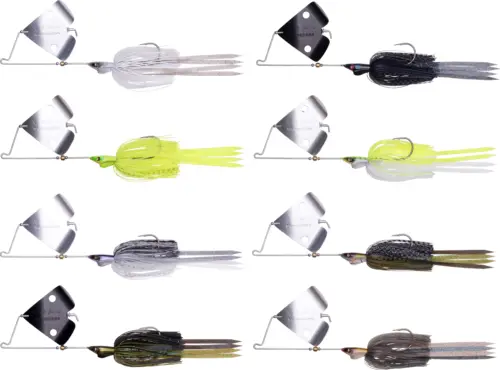
When the weather gets warmer and the water hits 60°F in spring, bass anglers get excited. Buzzbaits are a top choice because they’re so visible, make a lot of noise, and vibrate. This makes them perfect for catching aggressive bass. In this guide, we’ll share expert tips and techniques for fishing with buzzbaits.
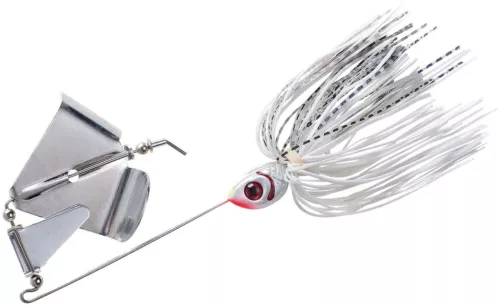
Buzzbaits have been a top choice for bass fishing for years. They are known for their ability to attract bass, especially in spring, summer, and fall. This makes them a favorite among anglers across the country.
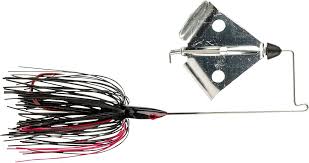
The spinning blades of a buzzbait make it easy for bass to see, even in cloudy water. The blades also make a loud sound that bass can’t ignore. Plus, the vibrations from the blades make bass want to strike the lure.
Many anglers now use a trailer hook with their buzzbaits, which helps catch more fish. Some also swap the skirt for a soft plastic to attract more bass.
Bassmaster notes that buzzbaits can lead to exciting strikes. The lure’s popularity soared in 1977 when Rick Clunn used it to win a tournament on Percy Priest Reservoir.
Today, many companies make buzzbaits, making them a key part of bass fishing. Anglers should keep their rod at a 9 or 10 o’clock angle. Using a fast reel (6:1 ratio or higher) helps in fishing with buzzbaits.
Mastering buzzbait fishing means trying different retrieval speeds. Topwater expert Zell Rowland says many anglers stop using their buzzbaits too soon. Instead, Rowland suggests always changing the speed to see what works best on any given day.
Changing the speed changes the lure’s sound and feel to bass. Slowing it down by cupping the blades can attract more cautious bass. Opening the blades a bit makes it faster, reaching more bass and getting different reactions.
| Retrieval Speed | Effect on Buzzbait | Potential Bass Reaction |
|---|---|---|
| Slow | Cups the blades more, creating a deeper, slower thump | May entice more cautious, finicky bass to strike |
| Medium | Balanced blend of sound and vibration | Often the most consistent speed for generating explosive topwater strikes |
| Fast | Opens the blades, increasing speed and creating a high-pitched, frenzied sound | Can provoke reaction strikes from aggressive bass in search of an easy meal |
By changing the buzzbait retrieval methods and adjusting buzzbait speed, anglers can catch bass in many ways. This helps them adapt to the changing moods of bass.
Buzzbait fishing is very effective at night, even without visible cover. Bass become more aggressive and travel far to hit a buzzbait in the dark. While you might not catch as many fish, the buzzbait often brings in bigger bass.
Gerald Swindle, a pro angler, has a trick for night fishing with buzzbaits. He bends the wire between the blade and the head into a stair-step shape. This keeps the bait deeper, making it easier for fish to swallow.
Night fishing tournaments are gaining popularity, like in Alabama’s Wednesday events. Anglers have caught bass up to 8.23 pounds on buzzbaits. The secret is slow presentations in shallow areas, where bass spawn during the day.
| Buzzbait Night Fishing Tips | Explanation |
|---|---|
| Modify the Buzzbait | Remove the skirt and add soft plastics that imitate local forage to make the buzzbait more enticing to bass at night. |
| Adjust Retrieve Speed | Slow down the retrieve in stained water for better visibility and strike-triggering vibrations. |
| Target Shallow Spawning Areas | Focus on shallow areas where bass would typically spawn during the day for better night fishing success. |
By using these night fishing with buzzbaits techniques, anglers can catch big bass, even in the dark. This versatile topwater lure is a game-changer for night fishing.
Many think buzzbaits are only for hot weather, but they work in many seasons. Kelly Jordon, a pro angler, has caught big bass in 46-degree water using buzzbaits in spring and fall. Bass seek shallow water to feed on warm spring or late fall afternoons. They look for a big meal when they move to shallows in cold water.
Jordon suggests a very slow retrieve to make a steady “plop, plop, plop” sound on the surface. This method is great when the water is around 50 degrees Fahrenheit. Alton Jones Jr. caught up to 25 fish on a buzzbait in water between 52 and 54 degrees during a tournament.
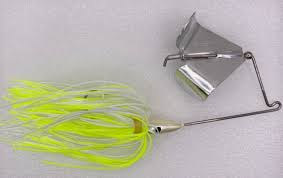
To do well with buzzbait fishing in cold water, use a lighter model, like a 1/4-ounce or 1/8-ounce one with a small blade. A subtle trailer, such as the YUM Bad Mamma, can help fish target the buzzbait more easily. It’s important to match the buzzbait size to the baitfish size you’re targeting.
| Statistic | Value |
|---|---|
| Percentage of buzzbait anglers not using a trailer hook | N/A |
| Increase in buzzbait fishing trend of swapping the skirt for soft plastic over the last decade | N/A |
| Number of companies offering buzzbait/soft plastic combos due to the rising popularity of this trend | N/A |
| Impact on buzzbait effectiveness when adding a squeak to create a unique sound compared to traditional buzzbait usage | N/A |
| Example of a successful fishing day with a buzzbait, catching a 5-pound fish and ending the day with 17 pounds | N/A |
Learning how to use buzzbaits in colder water can help anglers fish all year. This way, they can catch trophy-sized bass in different seasons.
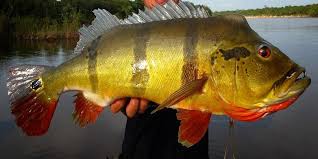
Buzzbait fishing is a great way to catch bass. The lure’s unique features make it hard for fish to resist. Try changing how fast you retrieve the lure to see what bass like best on any given day.
At night, buzzbaits can be super effective. Bass are more active and will strike from a distance. They also work well in cold water by using a slow, pulsing retrieve.
Here are some important things to remember when fishing with buzzbaits:
To improve your chances of landing bass, add a trailer hook or modify the buzzbait arm for more vibration. The best times to use buzzbaits are in the spring, after spawning, during shad spawn, and in low-light summer conditions.
| Buzzbait Fishing Techniques | Ideal Conditions |
|---|---|
| Start with the rod tip high, then gradually lower it to keep the bait at the surface | Shallow cover areas like weedlines, reeds, docks, and structure |
| Effective in a variety of locations, including sunken weeds, shallow flats, and parallel to the bank | Shade pockets created by docks, overhanging trees, and other cover |
Learning how to fish with buzzbaits can be a game-changer. It’s a powerful technique for catching bass in many conditions and throughout the fishing season.
Buzzbaits are not just for shallow, stained water. They work well in clear water too, with the right setup. Kevin VanDam, a seven-time Bassmaster Angler of the Year, uses a smaller, single-blade buzzbait in clear water. This lets him fish faster and get more bites.
VanDam also changes the buzzbait’s skirt. He removes half the strands to make it smaller and more natural. This makes the bait swim straighter and hook bass better. He picks a translucent skirt to blend in with the clear water.
To catch bass in clear water with buzzbaits, try these clear water buzzbait tactics:
Adjusting your buzzbait can help you catch bass in clear water. You’ll get more topwater strikes.
Learning to change the direction of a buzzbait can really help bass anglers. Gary Klein, a pro angler, suggests getting to know each buzzbait’s unique traits. He likes to have two rods ready, one for a bait that goes left and the other for one that goes right.
By placing the boat right and making the buzzbait change direction when it hits something, like a dock or brush, Klein gets more bites. He finds that making the lure change direction helps him connect with bass better and get more modifying buzzbait direction.
“Making a lure change directions is an effective way to play off the personality of bass and get more strikes.”
– Gary Klein, Veteran Pro Angler
To make a buzzbait deflect, it’s important to know how different blades affect its path. Smaller buzzbaits are more unpredictable, while bigger ones tend to go straight. Changing the blade, like crimping the rivet or adding a bead, can also change how it moves.
By learning how to change a buzzbait’s direction and make it deflect, anglers can create more interesting presentations. This can lead to more bites and a better fishing day.
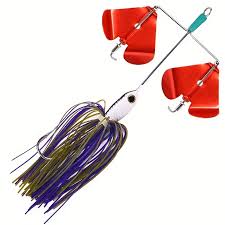
Fishing buzzbaits in windy conditions can be tough, but pros have found ways to beat it. Zell Rowland suggests removing the skirt from the buzzbait. The skirt can catch the wind, making it hard to cast and control the lure.
Another trick is to swap the skirt for a soft plastic body as a trailer. This makes the buzzbait more aerodynamic, easier to cast in windy weather. Gary Klein likes adding an 8-inch lizard as a trailer on big buzzbaits. It’s a great way to catch big bass when the buzzbait bite is strong.
Changing the buzzbait itself can also help. Anglers try different blade setups, like single-bladed or multi-blade, to see what works best in the wind. They also tune the buzzbait by crimping rivets or making the blades rougher. This boosts the lure’s sound and vibration, key for attracting bass in choppy water.
By tweaking their gear and methods, anglers can fish buzzbaits in windy conditions effectively. Whether it’s changing the skirt, adding a trailer, or tuning the buzzbait, the right tweaks can conquer wind challenges.
Bass often strike buzzbaits aggressively, but landing them can be tough. Anglers have found ways to boost their success. Adding a trailer hook helps catch bass that hit the lure behind the main hook. Also, changing the skirt color can help, especially in clear water where bass might see the bait too clearly.
Another tactic is to follow a buzzbait strike with a vertical presentation, like pitching a Senko-style soft plastic into the same spot. This can tempt a bass that missed the first time to strike again. Using strong braided line and a spinning rod can also help pull out big fish from thick cover.
To make buzzbaits more effective, crimp the metal blade at a specific point. This ensures it rubs against the same spot every time. This can create a squeak that attracts bass over time.
Cross-style trailers, toad-style trailers, and small swimbaits are top choices for buzzbaits. They’re great at attracting fish and improving bait presentation.
By using these techniques, anglers can greatly improve their buzzbait hook-up ratio. This increases their chances of catching more bass with these exciting topwater lures.
In the world of bass fishing, lure designers keep improving the classic buzzbait. These new designs are exciting anglers and changing how they fish for bass.
The River2Sea Crystal Buzz is a standout. It has a bismuth-tin alloy head that pops up quickly. It also has a hand-tied skirt and special blades for a strong sound that bass can’t resist.
The Bump-N-Run Buzzbait from Uncle Josh Bait Company is also innovative. It has a notched head that lets it move right or left. This makes it perfect for fishing in tight spots.
Crock-O-Gator’s Head Knocker buzzbait is another great design. Its flat, curved head keeps it on the surface. The blade hits the head, making a loud sound that attracts bass.
These buzzbait designs are changing the game for bass anglers. They offer new ways to fish and help anglers succeed in different situations.

| Lure | Key Features | Colors |
|---|---|---|
| River2Sea Crystal Buzz | Bismuth-tin alloy head, hand-tied skirt, separated blades | Not specified |
| Uncle Josh Bait Company Bump-N-Run Buzzbait | Notched head for left/right tracking | Not specified |
| Crock-O-Gator Head Knocker | Flat, curved head, blade hits head for loud clacking | Not specified |
These buzzbait designs are exciting anglers and changing topwater fishing for bass. They offer new ways to fish and help anglers succeed in different situations.
Anglers know that tuning buzzbaits is key to their success. By fine-tuning these lures, you can boost their sound and vibration. This makes them more likely to get bass to strike.
First, crimp the rivet that holds the blade to the shaft. This keeps the blade from turning, making the lure’s action consistent. Alton Jones suggests using pliers to crimp it gently.
Next, roughen the rivet’s surface with a fine file. This increases contact between the rivet and the blade. It helps in transmitting vibrations and sound better.
Waterlogging the blades is another effective technique. Run the lure under water for 15 minutes. This makes the blades squeakier and more attractive to bass.
These tips, from experts like Alton Jones, can make your buzzbait perform better. By crimping, roughening, and waterlogging, you’ll get more strikes from big bass.
Buzzbaits are great for many fishing situations. They work well in shallow, stained water because of their loud splashing and bright colors. In clear water, using a smaller buzzbait and moving it quickly can get bites from cautious fish.
They also do well in low light, like dawn, dusk, or night. Bass are more active and hungry during these times. Buzzbaits are very effective in the spring and fall when bass are in the shallows.
Buzzbaits are a top choice for both new and experienced anglers. They work well in many buzzbait fishing situations and when to use buzzbaits. By adjusting how you fish them, you can catch a lot of fish and have a lot of fun.
“Buzzbaits can produce some of the most exciting topwater strikes you’ll ever see if you match them to the right situations.”
Buzzbait fishing is a great way to catch bass. It offers anglers the chance to see bass jump out of the water. By knowing how to use buzzbaits, anglers can catch more and bigger bass.
The buzzbait works well in many places, like shallow water or open lakes. Anglers can make it even better by adding a treble hook or using a soft plastic trailer. This makes the buzzbait very versatile.
To do well with buzzbaits, anglers need to know why bass like them. They also need to learn how to use them right. By doing this, anglers can catch trophy bass and enjoy the excitement of topwater fishing.